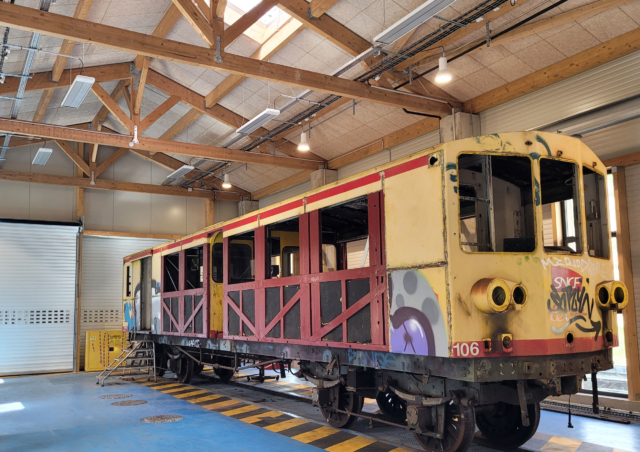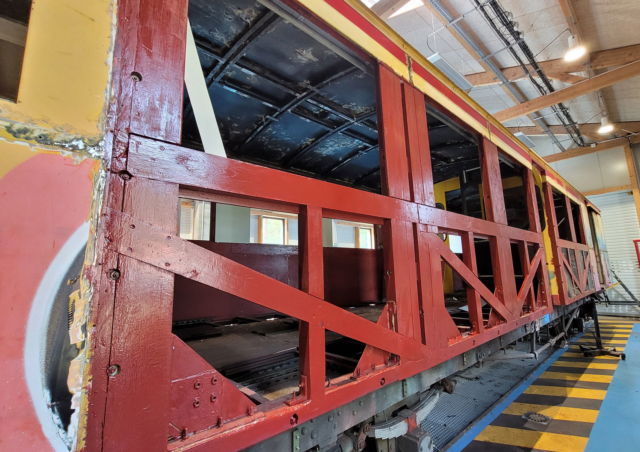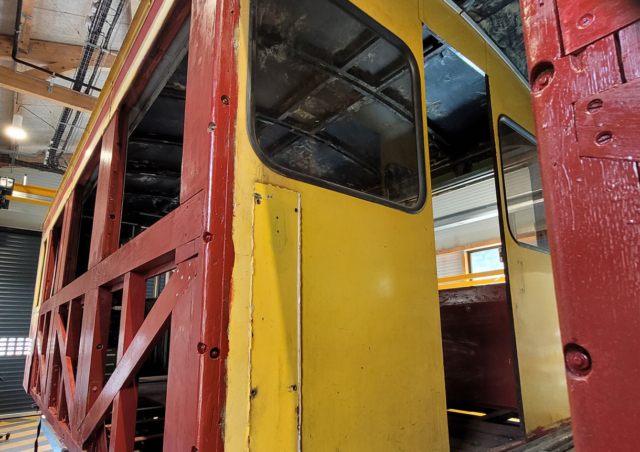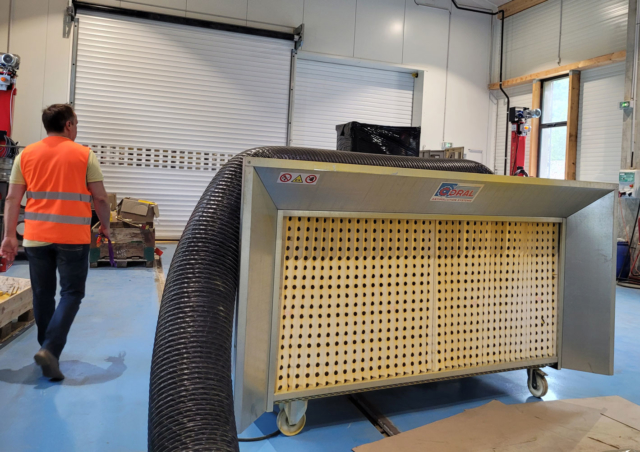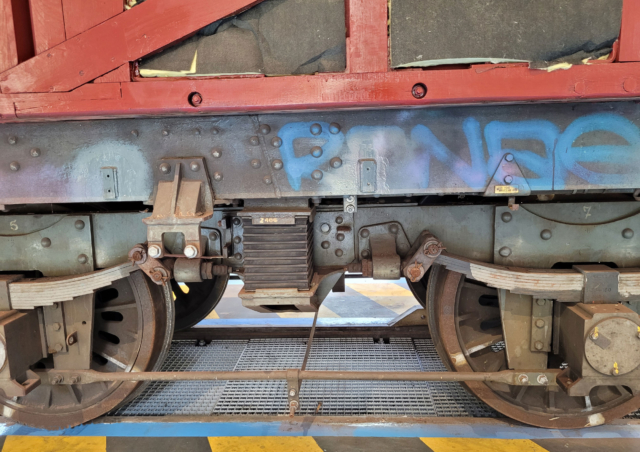Meet Laurent Lenfant, Director of Établissement Train Jaune, at Villefranche-de-Conflent/Vernet-les-bains station..
The General Overhaul (GO) concerns the rolling stock of the historic fleet and is scheduled over a 3-year period. Previous general overhauls took place in the 60s and then the 80s. In principle, it should have taken place sooner, but uncertainty over the future of the line led to it being postponed. Intermittent maintenance operations have enabled us to maintain rolling stock operations over the last few years.
This general overhaul, entirely financed by the Region to the tune of 20 million euros, will allow the Yellow Train to continue operating under improved conditions of safety and comfort, thus extending its service life.
Identified in 2016 as a priority line following the Etats Généraux du Rail et de l’Intermodalité (EGRIM), the Yellow Train enjoys strong support from the Region.. To enable locals and tourists alike to discover the Pyrenean countryside by train, a 32.5 million euros has been invested in infrastructure, including the renewal of power supply substations, and 30.4 million euros in equipment with, in particular, 18 million euros committed in 2022 for a first general overhaul of historic equipment and 4.7 million euros for the new Villefranche-de-Conflent workshop. This work to modernise the Yellow Train is also part of The Rail Plan which mobilises €800m over 10 years to improve the performance of the rail network in Occitanie.

A new workshop for the general overhaul
12 months of construction work went into building the new 480 m² workshop, specifically for the occasion on the Villefranche site. In addition to the current general overhaul, it will continue to be used for major maintenance work in the future. The historic Villefranche building was not entirely suitable for operations of this scale… Nevertheless, some parts will continue to be overhauled/manufactured at other sites, such as the traction motors sent for overhaul to the Lyon industrial technicentre.
Men and a train, a strengthened team
The maintenance team numbered 10 people before 2017, and has since grown to 20. The upcoming general overhaul period has led to the recruitment of 12 people for a 3-year period. These jobs are part of the project and are therefore also funded by the Region. Établissement Train Jaune has recruited 7 people via a specialist company, who are trained and supervised by the permanent electricians who have in-depth knowledge of the Yellow Train.
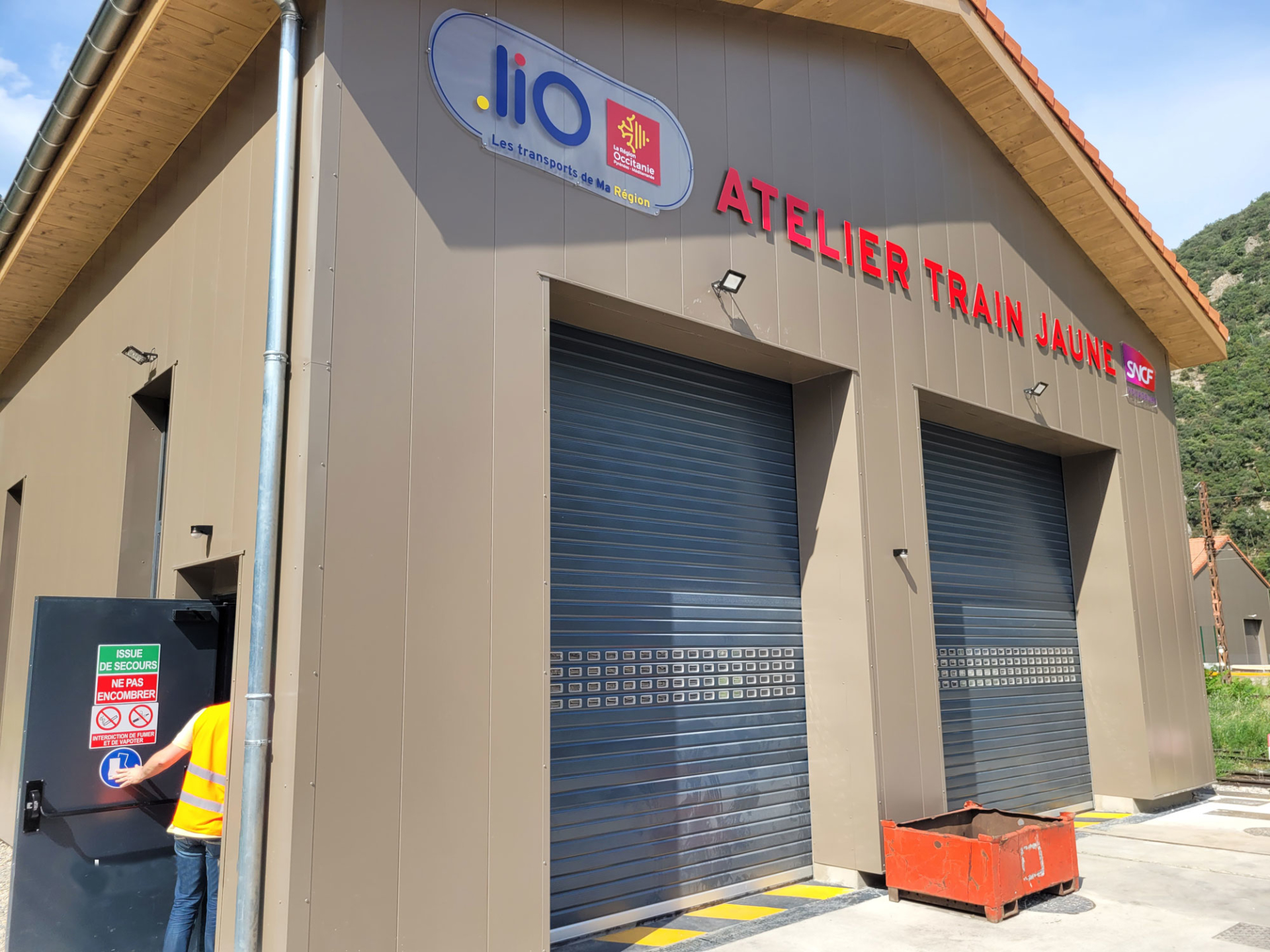
Remember that the line has a total of 27 vehicles, including 13 self-propelled units
In 1 railcar, there are 3500 m of electrical cables, to supply all the low- and high-voltage equipment, such as motors, heating, lighting etc., which run under the vehicle floor.
The General Overhaul in detail :
- Refurbishment of compressors.
- Replacing motor vehicle axles with new ones.
- In the new building : vehicle stripping / Cleaning / Painting and lamination.
- In the historic section : painting certain parts and reassembling others.
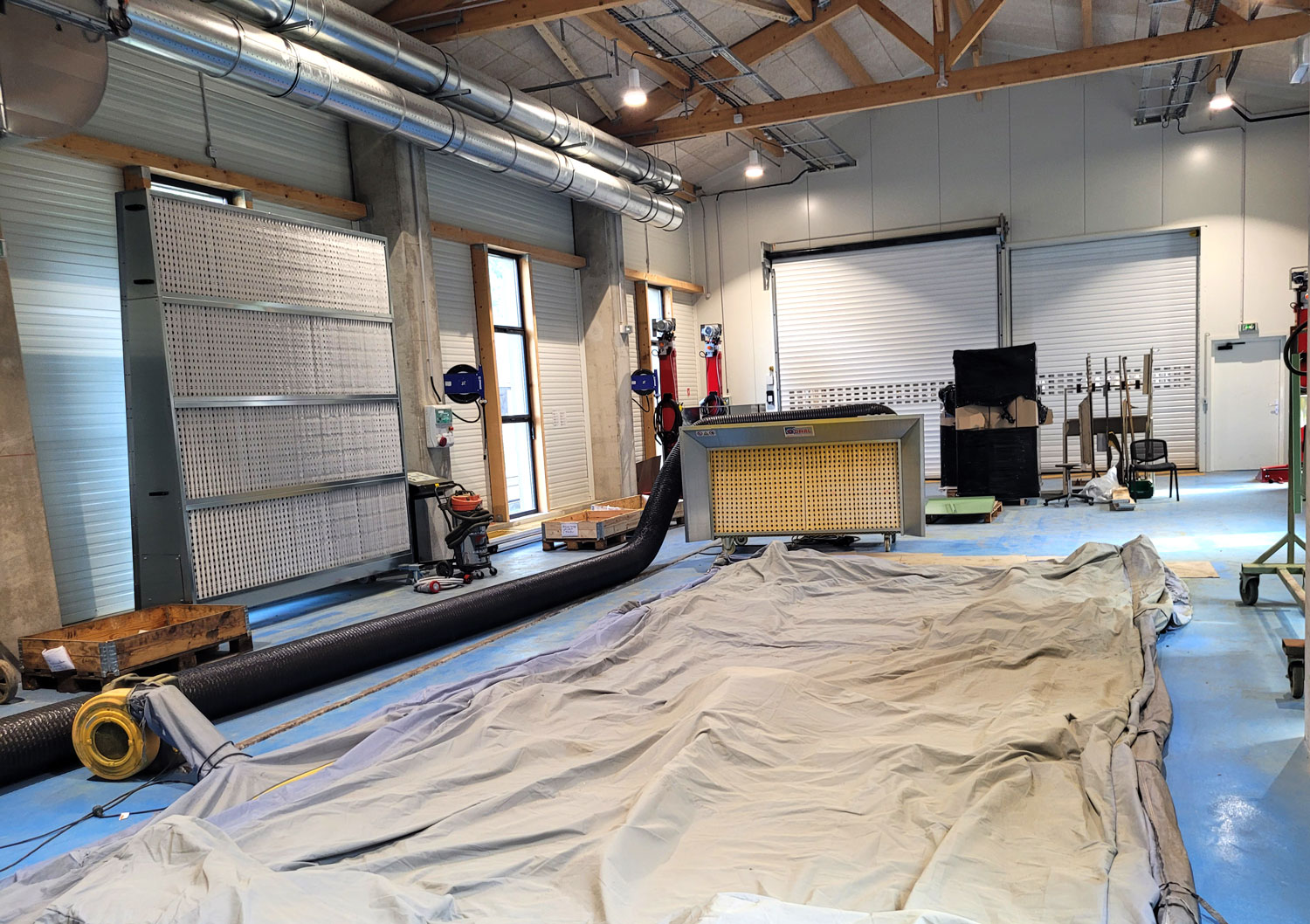
An assembly line extends over both buildings (historic and new), enabling Villefranche to cover this ” in-depth refurbishment “.
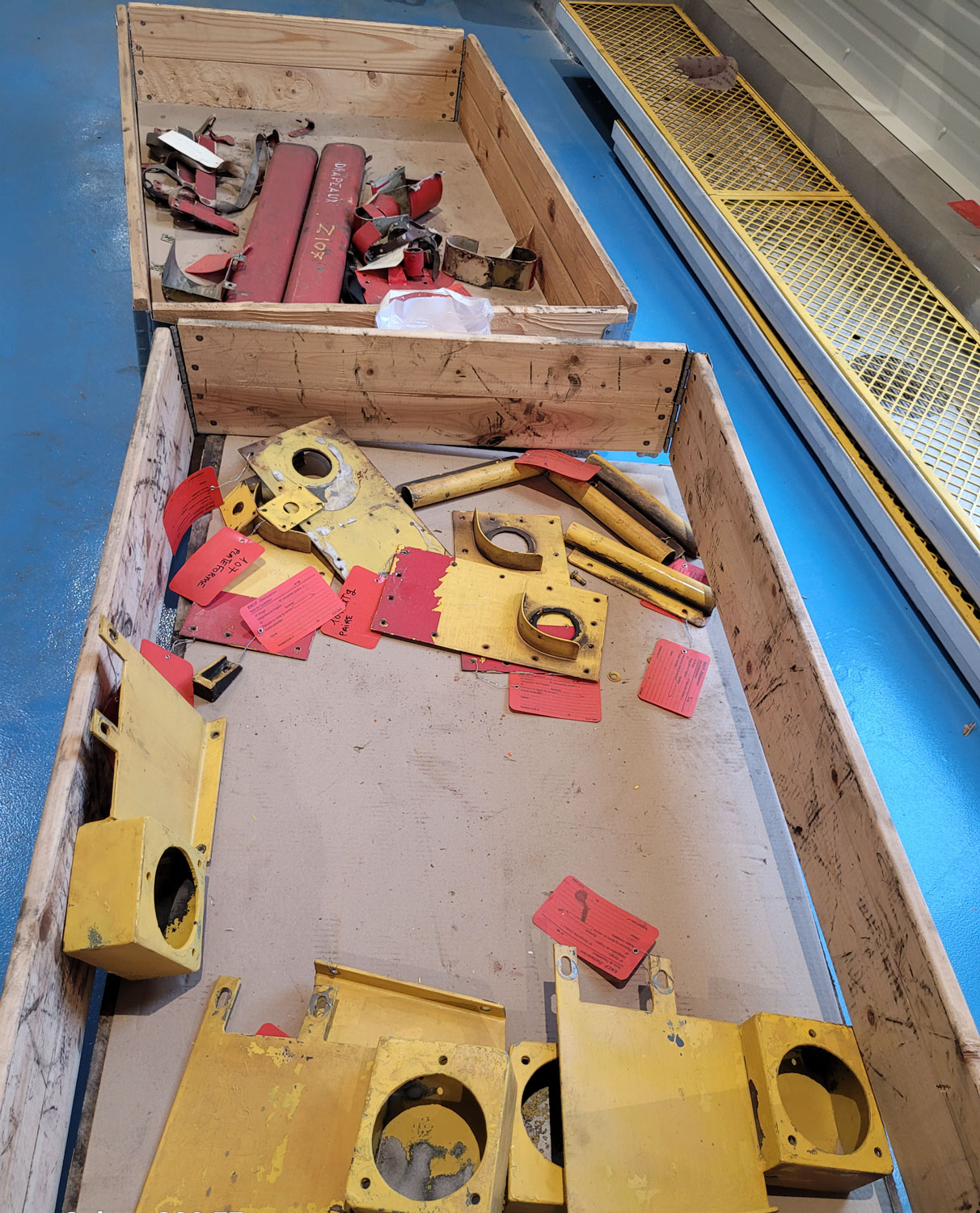
The Yellow Train can’t be industrialised, since none of the parts are standardised. Each piece is handcrafted ; each has its own place, its own purpose, its own location. This generates considerable logistical work to manage the flow of storage of parts. In response, SNCF financed the construction of a storage hall.
Modernisation that preserves the spirit of the Yellow Train
The General Overhaul includes safety and modernisation work, with the conversion to LED of the neon lighting inside the passenger compartments and the lanterns (vehicle end signal lights), insertion of USB sockets and a passenger information system. Also, there are parts we no longer know how to make. The approach is to adapt the Yellow Train and its specific features to allow them to be replaced over time, without spoiling them, to allow for the obsolescence of parts.
Traffic / Line safety
The Yellow Train currently runs 6 to 8 times a day in winter, depending on the day and school holiday periods. In summer, there are 10 every day. One of the aims is to double the number of circuits. Safety relies on people, especially the line manager and drivers. On the Yellow Train line, there is no technical interface between man and track to compensate for human error. By limiting the number of trains, we limit the risks (increased at crossing points). Today, trains run in complete safety thanks to specially trained operators who rigorously apply safety procedures.
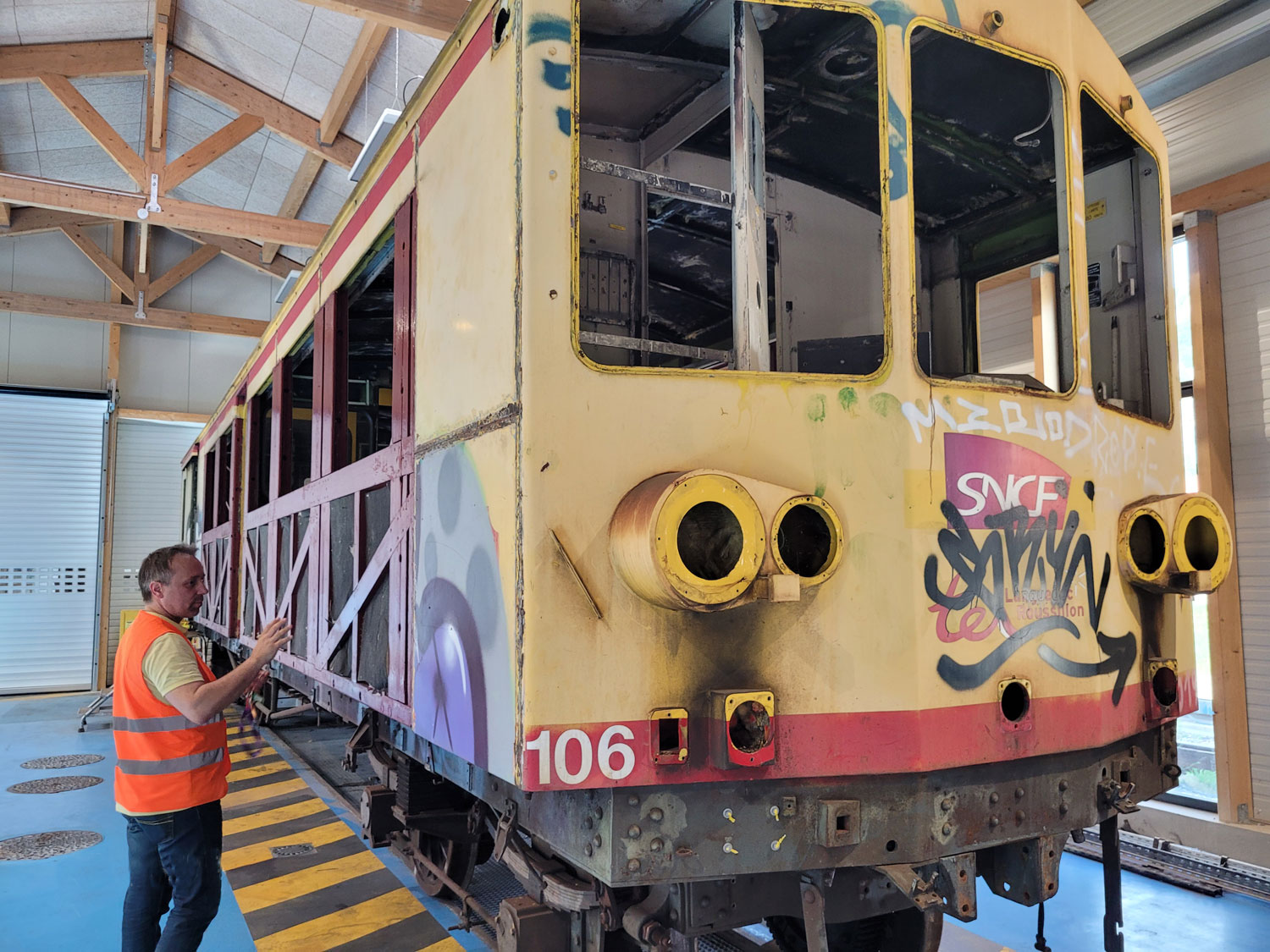
The SNCF commissioned an external service provider to design a new safety system for the Yellow Train, with a view to controlling costs. An increase in the vehicle fleet would then be necessary, with the construction of new trains to ensure such a transport plan, offering much greater traffic capacity in the long term. A set of specifications is currently being drawn up, including the future safety system to be designed.The SNCF commissioned an external service provider to design a new safety system for the Yellow Train, with a view to controlling costs. An increase in the vehicle fleet would then be necessary, with the construction of new trains to ensure such a transport plan, offering much greater traffic capacity in the long term. A set of specifications is currently being drawn up, including the future safety system to be designed.
In the meantime, from 2024 onwards, we intend to increase the number of summer train trips from the current 10 to 12. In 2012, the national body (EPSF), which has authority over rail safety, limited traffic to 10 train journeys to comply with safety standards, the aim being to sharply limit the potential risks that could lead to incidents. So this winter, SNCF Réseau will be testing the geolocation of radio sets. The aim is to give the line manager an additional tool to increase the level of safety. The STRMTG (Service Technique des Remontées Mécaniques et des Transports Guidés/Technical Service for Ski Lifts and Guided Transport), the new safety authority in charge of supervising the rail activities of secondary railways such as the Yellow Train line, will have to validate the proposal to increase traffic with this new arrangement.
The story of the Yellow Train goes on and on. We can see the willingness of the decision-maker, the Occitanie Region, to make a long-term commitment by providing the means to develop the line.

